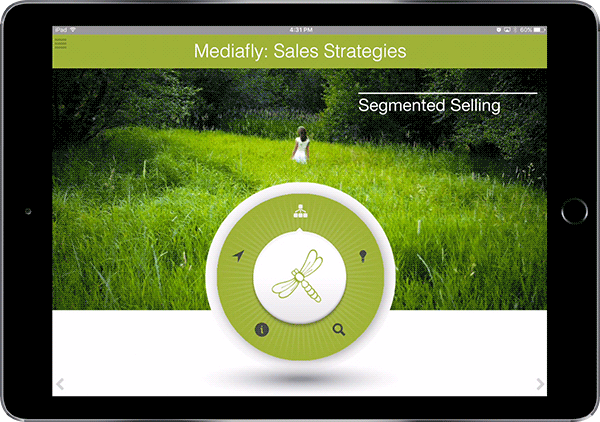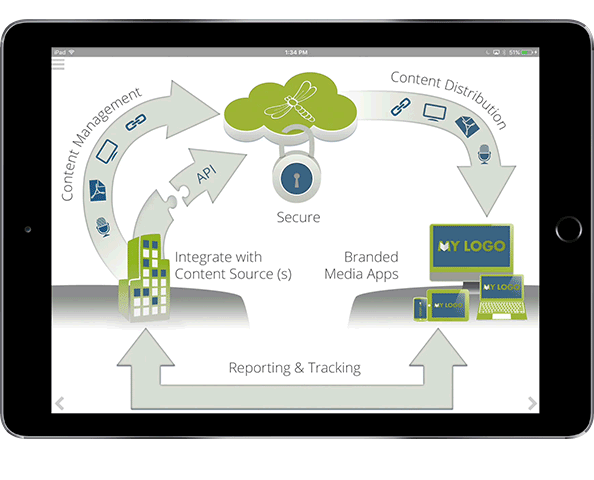 As sales reps become less and less reliant upon PowerPoint decks and stilted sales presentations, advanced sales organizations are turning their eyes to the next stage in sales enablement: Interactive sales content.
As sales reps become less and less reliant upon PowerPoint decks and stilted sales presentations, advanced sales organizations are turning their eyes to the next stage in sales enablement: Interactive sales content.
What interactive content doesn’t do is eliminate the sales rep—in fact, it takes the sales rep and makes them a key player in the buyer’s (or buyers’) purchasing decision as opposed to a passive script-reader and order taker.
Of course, it’s impressive to use a tablet with interactive content—it offers a change of pace from the steady stream of repetitive meetings a prospect has day-in day-out. But interactive content is so much more than a flashy gimmick. Interactive content solves a number of business challenges that both salespeople and marketers face, with a customer-focused vision to address those challenges.
It Creates Continuity
Interactive sales content may be a relatively new concept, but your customers should be very familiar with interactive content already. Whether it’s an ROI calculator, a quiz or a map that gives different information depending on which state you click, interactive marketing content is all around us.
For good reason, too. The key part of interactive is active. The prospects are no longer passive observers, waiting to hit the relevant piece of content. Modern marketers take advantage of this, both with these overt interactive elements, and also behind the scenes, delivering personalized content based on what content users engage with.
Prospects now expect this level of personalization throughout the buying cycle, but sales has been slow to catch up. With interactive content, companies are now empowered to carry the personalization that microsites and interactive elements offer into sales meetings—and swap out those stale and generic linear presentations.
It Untethers Sales Reps
Prospects aren’t the only ones who have had to deal with irrelevant content, such as the PowerPoints mentioned earlier—maybe dozens of slides long. Somewhere in there, there are some slides relevant to the customer, but the salesperson either has to skip over the rest in the presentation, or make a new presentation every time from that stack.
That’s not to say that life is any easier if they don’t use PowerPoints. Salespeople are burdened with so much content that 60-70% of it goes unused. Some of that content isn’t going to be relevant to certain prospects, but is 70% of content really irrelevant to every prospect?
With the traditional approach, sales reps have the equally thrilling choices of spending time curating content or skipping around PowerPoints. Interactive sales content spares them of those admin tasks by giving them the freedom to see the right content appear without hours of prep, for example, the right slides or videos appearing after the prospect describes how they sell.
But Still Gives Peace of Mind to Marketers
Marketers can be…protective of content. And rightly so. While sales reps should give input into content, at the end of the day, creating collateral is the marketer’s job. Marketers sometimes end up creating these incredibly comprehensive slide decks so the salesperson won’t need to create their own unvetted content. Nobody wins if that salesperson ends up giving the 50 slide presentation or takes time out of selling to create a new presentation, especially the customer. With interactive content, salespeople can be assured that not only does the content they need exist, it’s going to appear in front of them as they sit down in the meeting.
On their end, marketers don’t have to guess at whether their content is getting used. Smaller, individual pieces of content stand on their own, whether they’re tiles (see below), videos or PowerPoint slides, and come together as salespeople “co-author” a unique story with the customer. Marketers can also “track which modular content was used in each meeting,” says Melissa Andrews, “making the next co-authoring session that much easier.”
Example of an interactive frame
Lectures Are for Students, Not Prospects
There are parallels between teachers and salespeople, but giving lectures shouldn’t be one of them. After all, people remember only 10% of what they hear. That’s compared to the 80% people remember when they do something. This doesn’t make the salesperson expendable; those who transform themselves into sales consultants have an irreplaceable role to play in the sales process. But the interactive approach can make both prospect and salesperson more active participants in those early sales meetings.
The prospect can tell that this isn’t a canned pitch which allows the sales rep to become a part of the prospect’s story. The sales rep is now able to focus on the emotional connection, bringing in their own experiences and personal stories, augmented by having the right content on demand.
It’s Automation that Doesn’t Feel Like Automation
When you bring a tablet into the equation of a sales meeting, there’s fear that it creates a barrier between salesperson and customer. Others see technology as a way to stay connected to each other. As you can probably guess, we’re in the latter camp. The latest advances in selling allow sales reps to connect and individualize like never before.
On the backend, the amount of data going in could make your head spin: whether it’s logic for how content presents itself, equations that allow someone to calculate ROI on the spot or creating charts looking at industry averages.
On the front end, it’s just the salesperson, the customer, and, yes, the tablet (or phone or desktop), without the distractions of stopping to find content or turn away from the customer for any reason. Interactive content automates the rote and mundane tasks that the salesperson would have had to do by hand, empowering them to focus the connection that leads to closing.
Want to see how interactive content can transform the way you sell? Download the My SalesKit demo below or request a tailored demo from one of our business development professionals today!



Comments are closed.